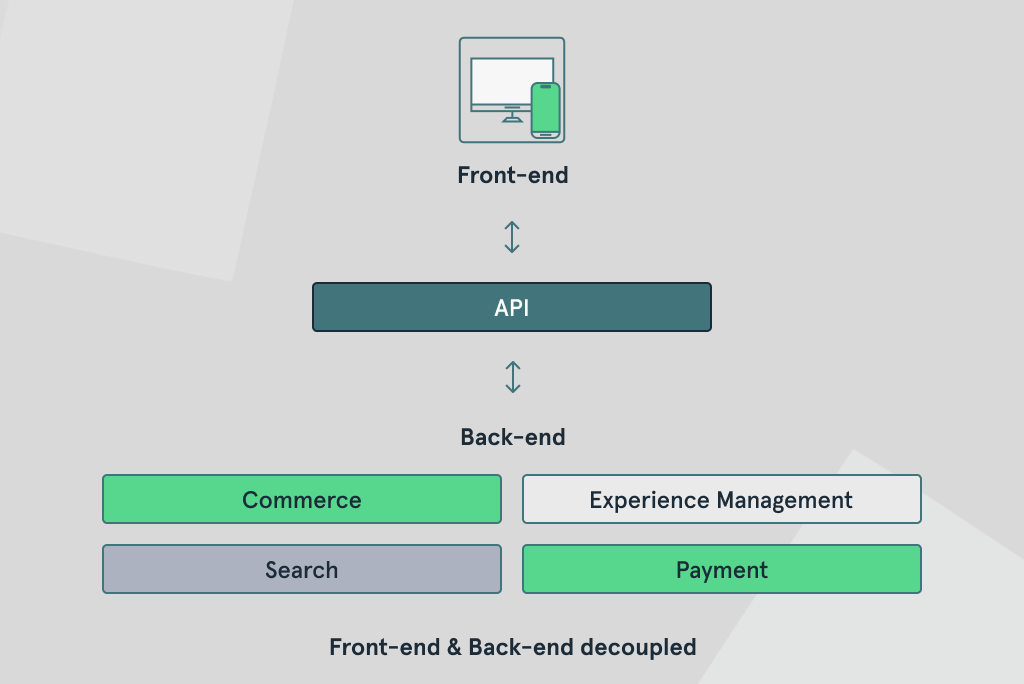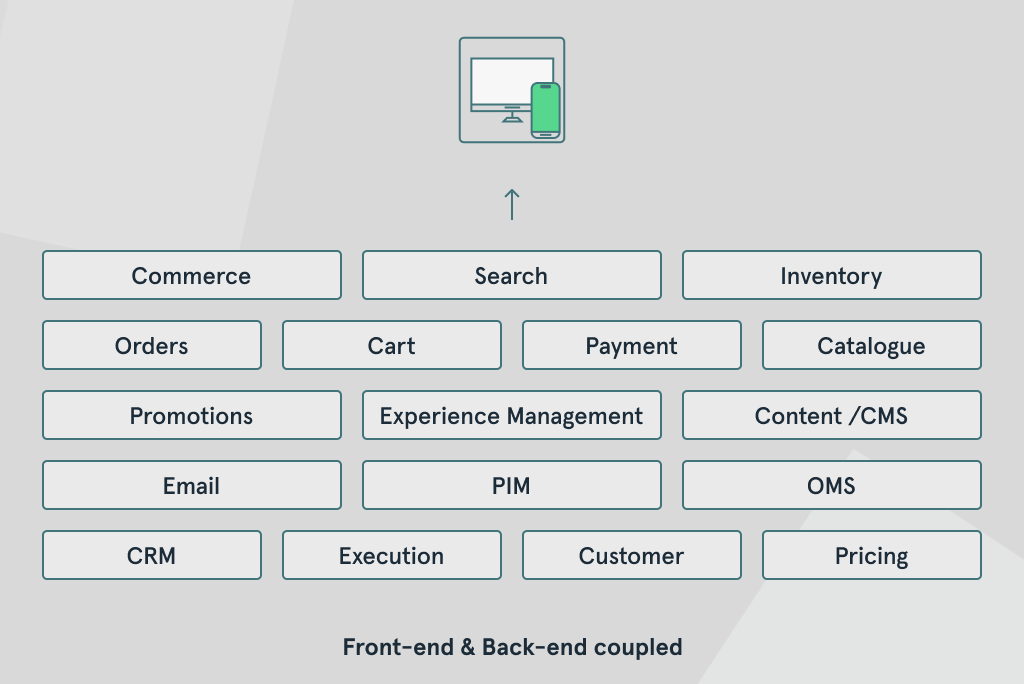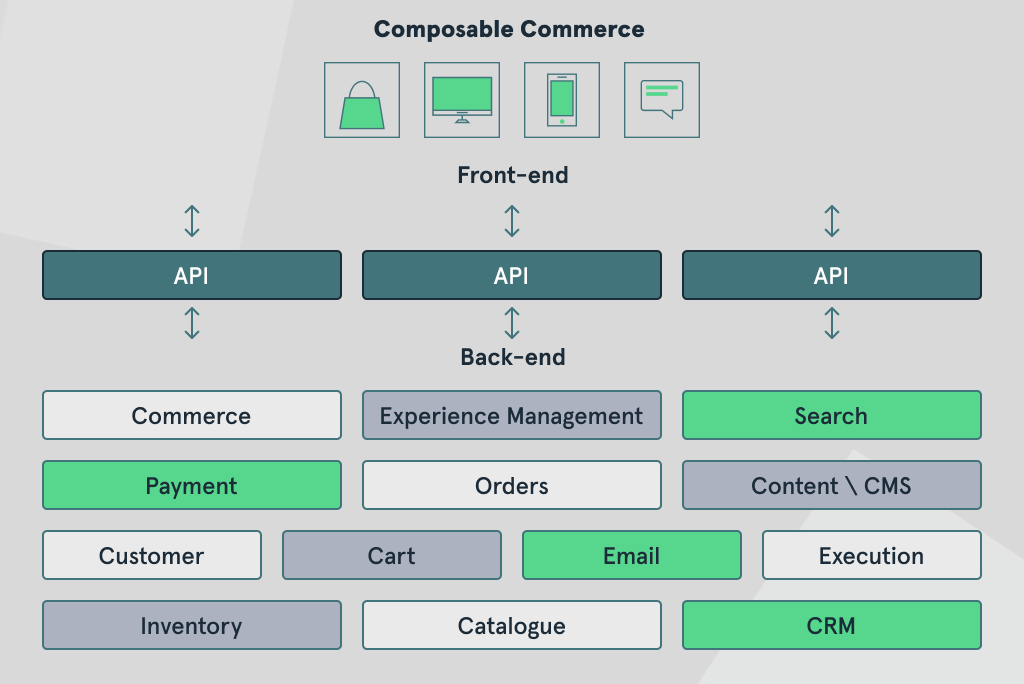The eCommerce landscape is constantly evolving.
Businesses are doing their best to keep up with the latest trends, improve their online presence and customer experience.
A flexible and scalable commerce architecture makes it much easier to meet the ever-changing demands of the eCommerce industry. Hence, two approaches have gained popularity in recent years – headless commerce architecture and composable commerce architecture.
Sometimes the two types of architecture are considered the same. In reality, there are a few differences that set them apart.
In this article, you’ll learn the key differences between headless vs. composable commerce.
A quick overview of the article:
- What is headless commerce?
- What is composable commerce?
- Key benefits of two eCommerce architectures
- Choosing between architectures
Let’s dive right in.
What is Headless Commerce?
Headless commerce is an approach to building an eCommerce architecture that separates the frontend (i.e. the user interface) from the backend (i.e., the server-side logic and database). Sometimes, the backend and frontend of headless commerce is also called decoupled.
Headless commerce architecture provides greater flexibility compared to traditional eCommerce architectures with the coupled frontend and backend.
Businesses can make changes and updates to the frontend without impacting the backend. As a result, different teams can work on different parts of the website without creating any conflicts.
Headless commerce architecture also allows using various frontend frameworks, such as Angular, React, Vue.js for a better and personalized customer experience.
To sum up, a headless commerce solution is:
- When the frontend is decoupled from the backend
- An easy for merchants to work efficiently on customer experience
- Better flexibility in terms of development and frontend design
- Ability to make changes to the frontend without impacting the backend
- Possibility to use and combine different frontend frameworks and technologies
- Still relying on the backend
Development Get a robust PWA
Supercharge your eCommerce efforts with superb UX and ‘superfast’ speed. Build an eCommerce PWA from scratch or save time and money using GoPWA Storefront.
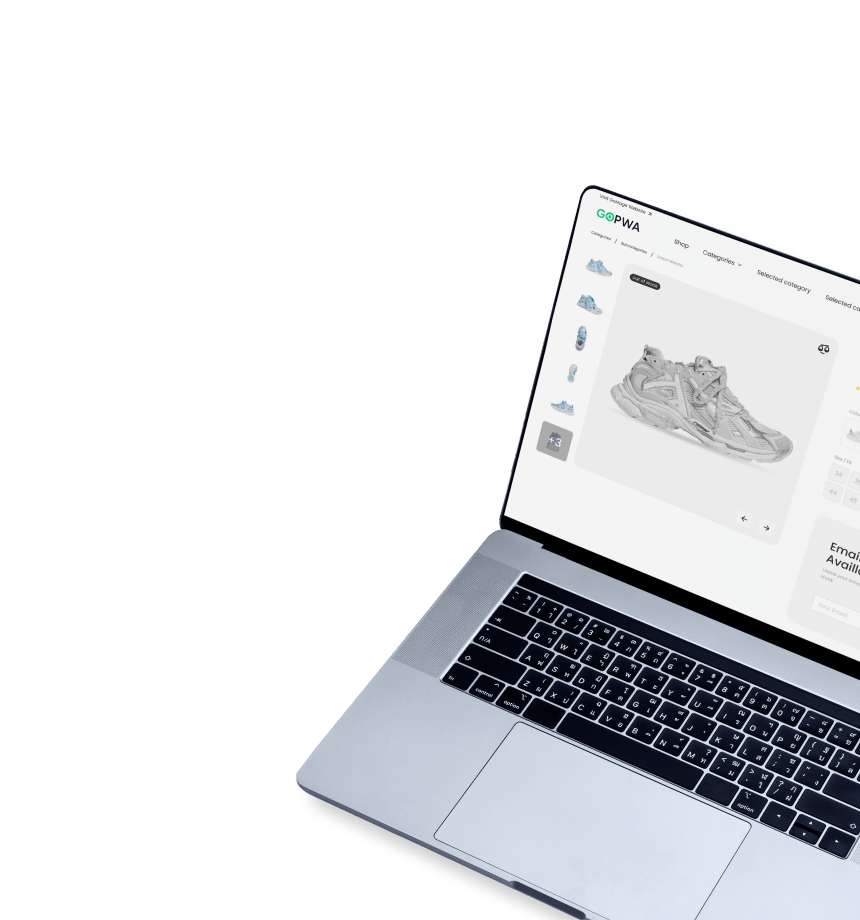
What is Composable Commerce?
Composable commerce is a new approach to building eCommerce systems when it’s divided into different parts and turned into independent modules. This eCommerce architecture allows different teams to work on different parts of the system and provides excellent flexibility and scalability.
In 2021, Gartner named the compossible approach to building eCommerce solutions as a way to survive in the competitive market.
Composable commerce is based on the microservices approach. All eCommerce features are separated and then combined together thanks to APIs and microservices components.
Summing up, a composable commerce platform is:
- A system where all components are independent of each other (not only frontend)
- A method for merchants to be independent of platform suppliers
- A way to use the best components to keep up with trends
- Independent development of different parts of the system
Development Get a robust PWA
Supercharge your eCommerce efforts with superb UX and ‘superfast’ speed. Build an eCommerce PWA from scratch or save time and money using GoPWA Storefront.

Headless vs. Composable Commerce: Common Advantages
While headless commerce is a technology, composable commerce is more like a business practice enabled by headless technology. It’s the practice that companies use to assemble their own bespoke eCommerce solutions.
- Flexibility – since frontend and backend are independent of each other, businesses have more leeway in selecting the software. The headless and composable architectures reduce the chance of conflicts between different components as APIs handle all the requests between systems. This makes integrations much easier.
- Higher speed – decoupling the frontend from the backend improves a website’s performance. When customers make requests, they don’t always go through frontend to the backend. Frontend can process some requests independently, reducing the response time. For example, our GoPWA storefront, built as a headless solution, makes ~8 times less GraphQL requests to the backend than traditional Magento. It results in faster speed and customer experience.
- Better control – in traditional systems, page layout and website content changes usually involve developers. As a result, your marketing team has to wait for developers to be free to make changes, as they involve both frontend and backend. With headless and composable solutions, such changes are often made through a user-friendly CMS or page builder. As a result, marketing and business teams can launch new pages and update existing content fast, delivering the best results.
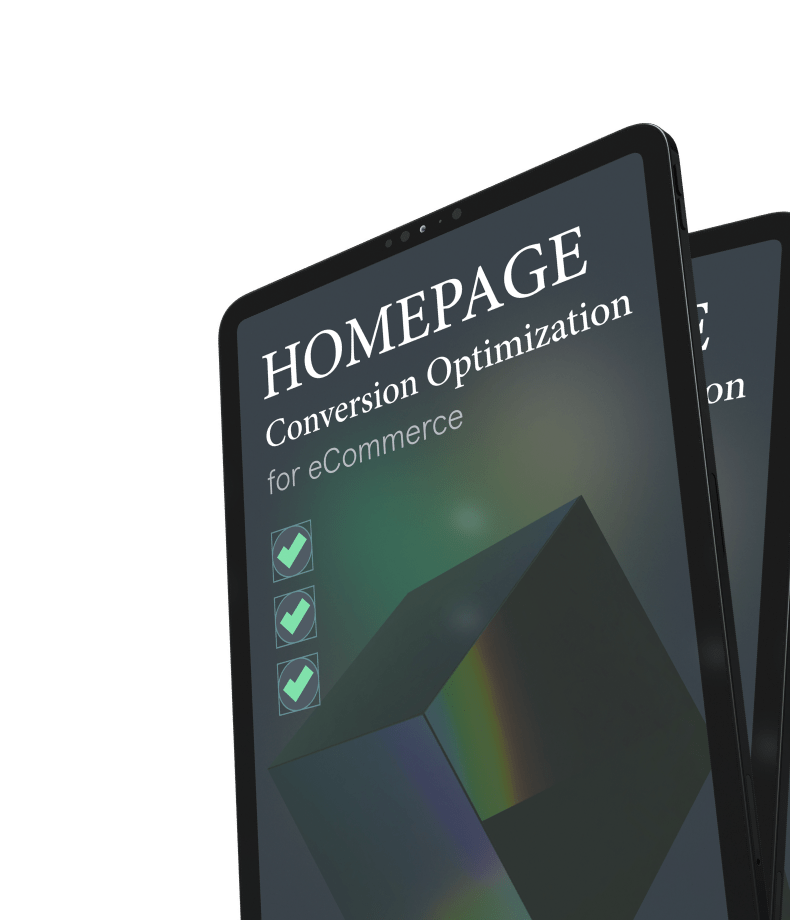
In addition, composable architecture provides a number of extra benefits:
- Higher control over the tech stack – you can add, drop or change platform components whenever you like.
- Reduced costs – you can take only the services you need and pay for them. If you decide to migrate to a composable headless solution, you won’t need to deploy the whole backend infrastructure.
- Easy integration with third-party solutions – if your platform provider doesn’t offer the service you need or not in the capacity you need, you can choose a tool from third-party providers and integrate it with the system. It’s worth noting that headless commerce solutions also provide such an ability but with a different development approach.
- Better adaptation to the ever-changing environment – something that worked two years ago might not work for you now. The composable architecture allows you to make changes to some parts of the system without impacting other components.
Composable Commerce vs. Headless: Key Takeaways
Headless and composable commerce architectures are the answer of technology companies to the rapidly evolving eCommerce industry.
These development approaches give companies a higher control over their eCommerce platforms and the freedom to make changes without remaking the whole platform.
Both solutions rely on APIs to connect the backend and frontend. However, composable commerce implies building a bespoke solution. It takes the logic of headless commerce and goes a step further with APIs to connect separate backend services. To build such a solution and make different services work together, takes expertise in the topic and understanding of business requirements.
There are multiple reasons why you should turn your Magento into a headless solution:
- Better customer experience
- Better website performance
- Flexibility and easy integration with third-party services
- Full independence of frontend from backend
- Faster frontend and content updates


